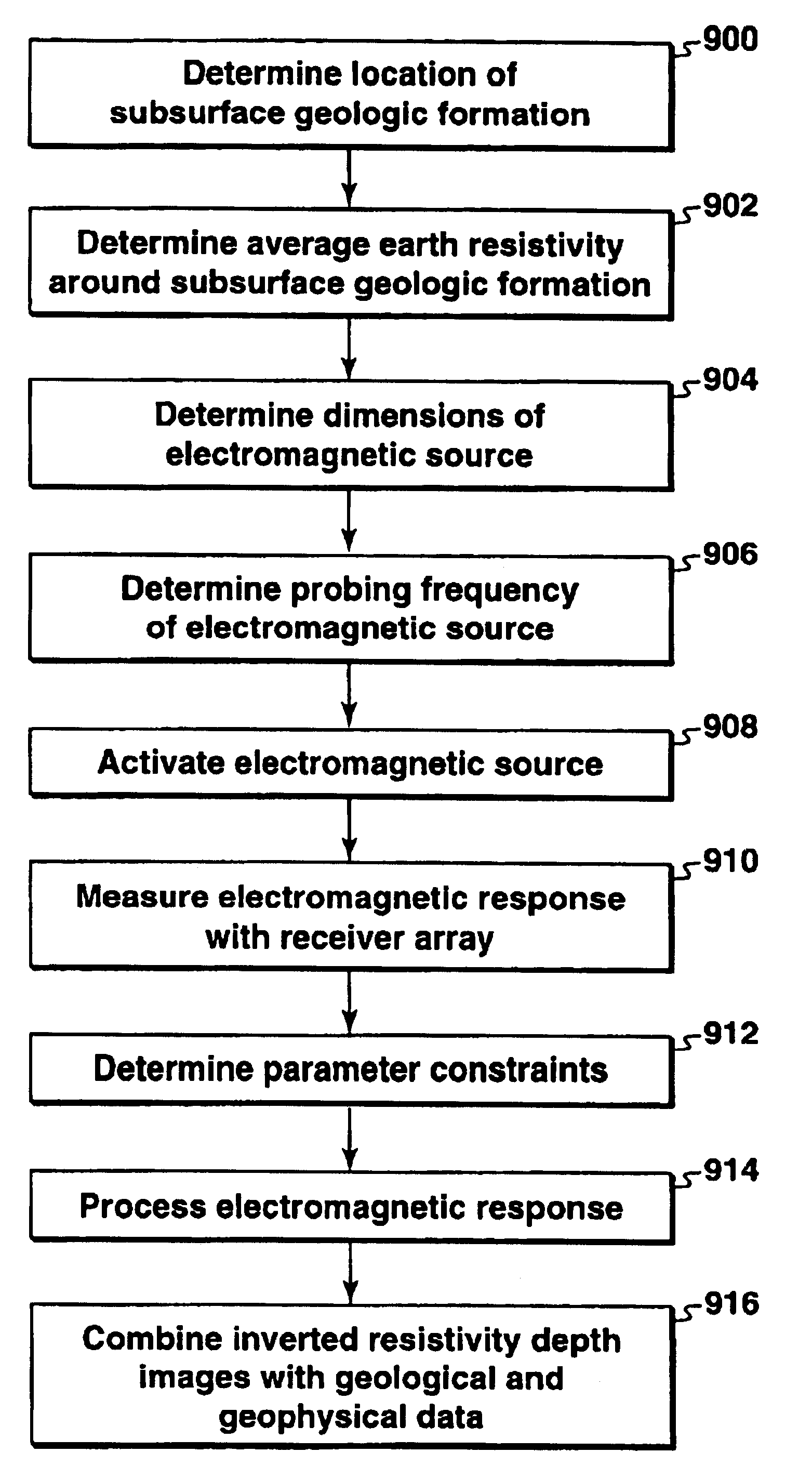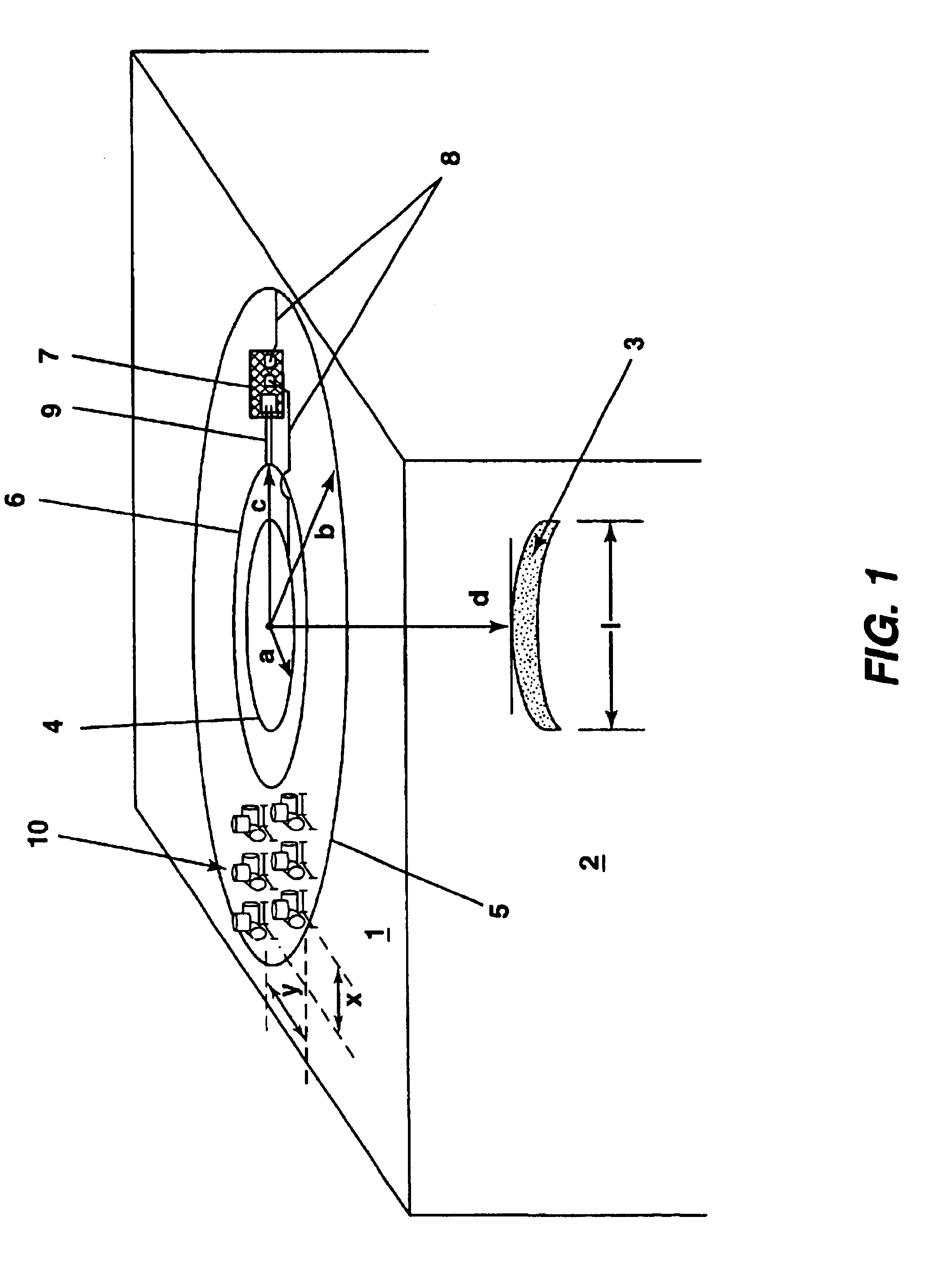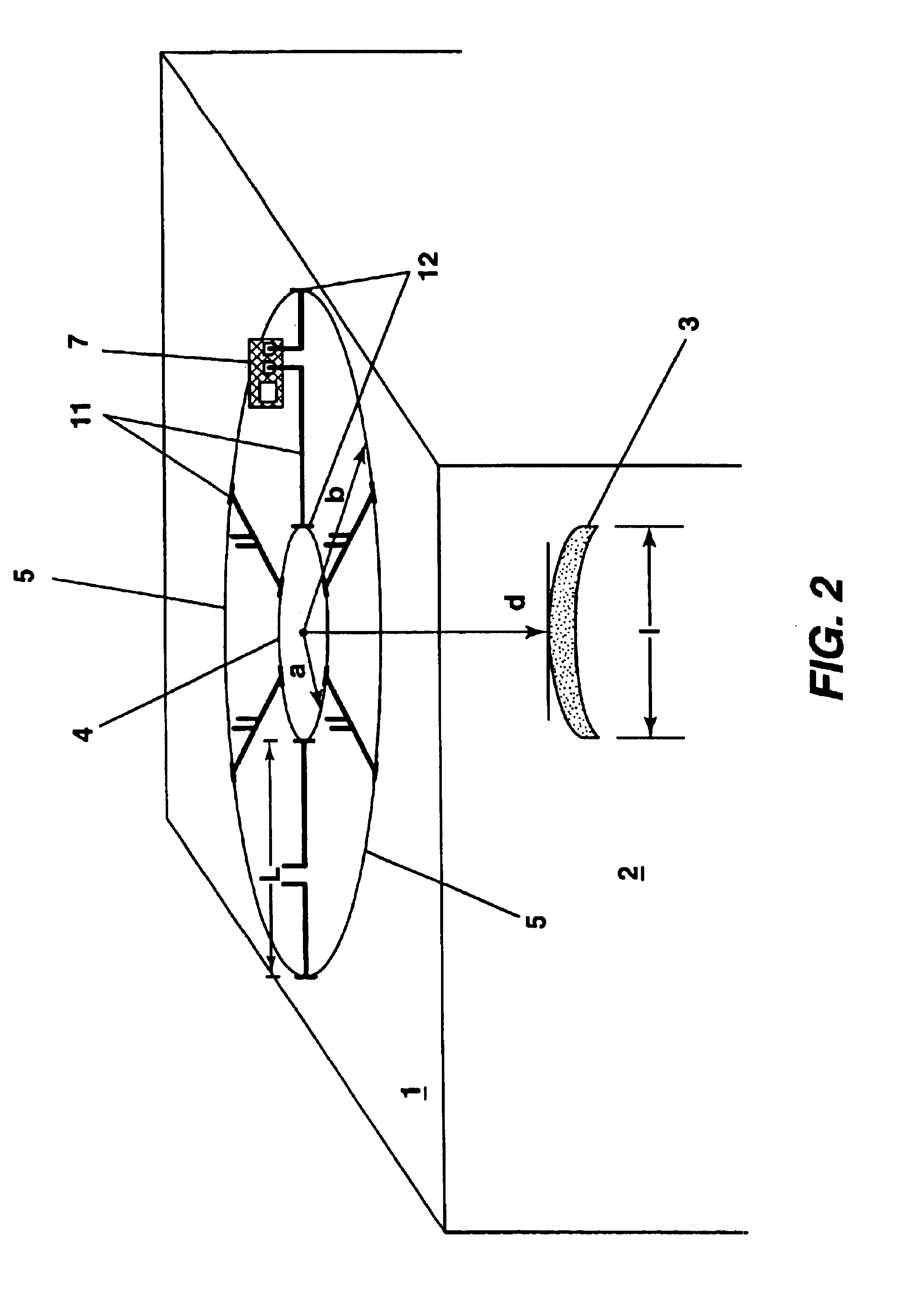Remote mapping and analysis from the surface of the earth of hydrocarbons reservoired at depth remains a difficult technical task.
Seismic detection difficulties arise in part from the fact that the mechanical properties of reservoirs, to which the seismic probe responds, are often only slightly modified when hydrocarbons replace formation waters, especially in the case of oil.
Subtle mechanical effects related to
seismic wave propagation and reflection can
mask DHI and AVO signatures or even produce misleading signatures.
For example, low gas saturation in water sands can produce false seismic DHIs.
Because of such effects,
drill-well success rates are too low and exploration costs are too high in many basins.
Acquiring this knowledge is problematic using only seismic data.
However, increased formation resistivity alone may not uniquely indicate hydrocarbons.
However, it would also have low electrical resistivity and hence would be a high-risk
drill-well prospect.
However, there is no existing technology for remotely measuring reservoir formation resistivity from the land surface or the seafloor at the vertical resolution required in
hydrocarbon exploration and production.
Direct exploration for hydrocarbons using surface-based electromagnetic imaging has been attempted since the 1930s, but with little commercial success.
This lack of success is due to the low spatial resolution and the ambiguous interpretation results of current electromagnetic methods, when applied in stand-alone and spatially under-sampled ways to the geological
imaging problem.
The vertical resolution of such electromagnetic
waves is relatively insensitive to bandwidth, unlike the seismic case, but is very sensitive to the
accuracy and precision of phase and amplitude measurements and to the inclusion of constraints from other data.
That is, the unconstrained geophysical electromagnetic data inverse problem is mathematically ill posed, with many possible geologic structures fitting electromagnetic data equally well.
Consequently, the vertical resolution of unconstrained electromagnetic imaging is typically no better than 10 percent of depth.
All five methods suffer from the vertical resolution limitation of approximately 10% of depth cited above, which makes them unsuitable for direct reservoir imaging except for unusually thick reservoirs.
This resolution limitation results from one or more of the following deficiencies in each method: (1) lack of means to focus the electromagnetic input energy at the target reservoir; (2) spatial undersampling of the surface
electromagnetic response fields; (3) measurement of only a few components (usually one) of the multi-component electromagnetic surface fields that comprise
full tensor electromagnetic responses at each
receiver (except for WEGA-D / PowerProbe); (4)
data processing using 1-D, 2-D, or
pattern recognition algorithms rather than full 3-D imaging methods; and (5) lack or paucity of explicit depth information and resistivity parameter values incorporated into the
data processing to constrain the inversion results.
Another serious limitation in these five methods is their use of high-impedance contact electrodes and connecting wires, with greater than 1
Ohm total series resistance, to transmit the source current into the subsurface.
High
output impedance severely limits the
electrical current at the reservoir depth, which in turn reduces the strengths of the surface electromagnetic responses to the subsurface reservoir for a given source power.
Current lmitatin due to high-impedance sources also results in reduced depths of exploration, especially in
electrically conductive sedimentary basins.
However, ring electrodes described by Mogilatov and Balashov do not contain discussions of, much less calculations for, the optimum
electrode dimensions needed to maximize the vertical
electric field or
current density at the target (reservoir) depth.
Natural-source methods such as that of Hoversten et al. lack the vertical resolution required for
direct imaging of resistive
hydrocarbon reservoirs, because they measure the earth's response to the flow of horizontal subsurface electrical currents that are insensitive to regions of increased resistivity.
However, there is no existing remote (surface-based) electromagnetic method for measuring both the separate vertical and horizontal resistivities of a reservoir interval at depth.
 Login to View More
Login to View More  Login to View More
Login to View More 


